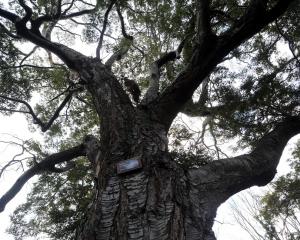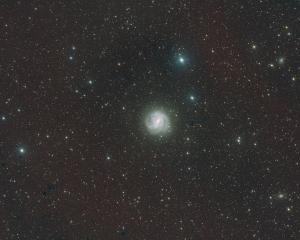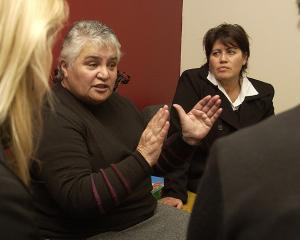
Four small letters attached to the end of many reports in New Zealand newspapers have disappeared.
The letters - NZPA, or New Zealand Press Association - have gone because the agency, after 131 years, has closed, swept away by fast-moving technology and squeezed by competition between two media empires.
On Wednesday night the last report from its Wellington office was sent to papers.
The report read: "This is the final message from the New Zealand Press Association.
"Since 1880 there have been hundreds of thousands of stories and hundreds of millions of words recording our country's development and daily doings.
"We now sign off.
"It has been a pleasure and a privilege.
"ENDS."
NZPA had appeared to be on borrowed time since 2006, when it moved from a co-operative story-sharing model to a commercial approach, supplying news and related information to customers - and not just newspaper customers - who paid to receive it.
Recent newspaper history might suggest the demise of NZPA is yet another tombstone in the industry's graveyard.
But three new services are rising from the ashes of the agency, signalling a new era of competition for readers - and jobs for some redundant NZPA staff.
The APN News & Media group, together with Allied Press, publisher of the Otago Daily Times, and other independents have formed the APNZ wire service, while the Fairfax group and the Australian news agency AAP have also launched services to fill the gap.
Nevertheless, after 131 years of helping to keep New Zealanders informed, the demise of NZPA was for many of those involved an occasion for sadness and reflection.
But, as Otago Daily Times editor Murray Kirkness observes, it does not sound the death knell for New Zealand-wide news coverage.
"NZPA has played a historic role as a news lifeline for the country," he said as NZPA filed it final stories on Wednesday evening.
"And while we respect the work the agency's staff continued to perform under budgetary constraints and an uncertain future, we believe that the new APNZ agency will in fact offer our readers a better service."
Stories generated by APNZ are now being sent to 50 New Zealand newspapers. Those titles - including the country's largest newspaper, the NZ Herald - are also contributing copy (stories, photographs, graphics and video) to APNZ for use by subscribing papers and their online sites, just as NZPA did for more than a century.
Led by Auckland-based bureau chief Chris Reed, the APNZ agency will feed newspapers and websites within the APN group, as well as the Otago Daily Times and its sister publications, plus the Greymouth Star, Ashburton Guardian, Westport News and Gisborne Herald. The customers pay for the service through subscriptions.
Seventeen staff work for the service, including some recruited from NZPA.
Reed (39) moved from the Herald on Sunday earlier this year to set up APNZ. His task is to generate exclusive content and cover breaking news for all the titles, which he says are seen by 2.3 million readers a week.
His team will find ways to gather stories from parts of the country not already covered by member newspapers.
"If a big story breaks in a region where we're a bit light then we'd send in our own reporter."
Those staff have mobile reporting kits to so they can get the story out quickly.
The new Fairfax service is called Fairfax New Zealand News, or FNZN.
The publisher, which has more than 70 newspapers and 400 reporters in New Zealand, runs its copy-sharing model through existing newsrooms and additional sport, business and political bureaus.
It has hired a senior NZPA journalist as its "national content editor". His task will be to manage group coverage on the big stories of the day.
Fairfax executive editor Paul Thompson told his staff in a memo the company had New Zealand's "biggest newsroom" which created hundreds of pieces of unique content each day - "truly our new river of gold".
It was a stand-off between APN and Fairfax that finally spelt the end of NZPA, with Fairfax declaring its intention to walk away in April.
But the pressure on NZPA's co-operative model has been building for some time.
From 2004 competition between the Australian-owned APN and Fairfax groups in the North Island sharpened - a former NZPA staffer believed the APN-owned NZ Herald and the Fairfax Dominion began filing major stories late to NZPA at about that time so others could not use them. Those cracks in the NZPA model became caverns.
The Australian owners were not used to the copy-sharing model because NZPA's counterpart there, the Australian Associated Press, like most news agencies around the world, produced its own stories and sold them on the open market.
Things came to a head when in 2004 APN established the Herald on Sunday, and Sunday Star Times owner Fairfax refused to supply NZPA with anything that the other Sunday paper could use.
At that stage Fairfax stayed with NZPA but started to set up an internal news network to share stories around its own newspapers.
With the demise of NZPA this week, the Australian AAP service has moved across the Tasman.
Its service, NZ Newswire (NZN), starts on Monday. Editor-in-chief Tony Gillies said the company would have 10 journalists - including ex-NZPA staff - split between Auckland and Wellington.
It would also use freelancers and "stringers"- irregular correspondents who fill gaps as required.
He did not see NZN going head-to-head with its bigger rivals. Rather it would file finance and sports material to Australian customers, and dig out complementary New Zealand content.
At NZPA, as the clock wound down on decades of journalism, chief executive Tim Pankhurst said the mood was more resignation than recrimination.
About two-thirds of its 42 staff had found jobs, and he admired the way all had stuck to their tasks as the final evening's deadline approached.
Mr Kirkness says the decision by the APNZ partners to return to a co-operative copy-sharing arrangement - such a strong feature of NZPA - means the new agency will be grounded on the principles that made its forerunner such a success.
"APNZ will strive to be first with the news through the online sites of its member newspapers, including ODT Online (www.odt.co.nz), but it will do so with the awareness that newspapers and their staff remain the big drivers of original news coverage.
"To this end there will be plenty of news and feature articles that will be found and read first and exclusively in those newspapers."
Membership of APNZ also provides access to an expanded overseas news and features service, with international copy from AAP, AFP, Global Post, and the UK Press Association.
The Otago Daily Times will continue to take copy from other sources - such as Reuters, MCT, Getty, and The Observer - familiar to readers of sections such as Monday's World Focus.
But for all the promise of the new arrangements, the demise of NZPA is still a cause for sadness for many.
"Undoubtedly," says Mr Kirkness, "But also a day of exciting opportunities; opportunities that will help us navigate through a new era in newspaper reportage; opportunities that will enable the Otago Daily Times to continue to be the best news provider in the South."
• Founded in 1879-80 as the United Press Association. Became the New Zealand Press Association in 1942.
• It effectively drew the country together as newspaper readers had access, via the telegraph, to news from beyond their region.
• At its peak just after World War I, the agency had 74 subscribing papers bound in a co-operative to share their stories with other members. In the '70s and '80s, NZPA had reporters in Sydney, Asia, London and Washington DC.
• In 2006 the agency struck out alone when members stopped supplying reports after rival Australian media firms consolidated their hold on the NZ market and saw no benefit in co-operating.
• Its death knell was sounded in April when Fairfax decided to go it alone.












